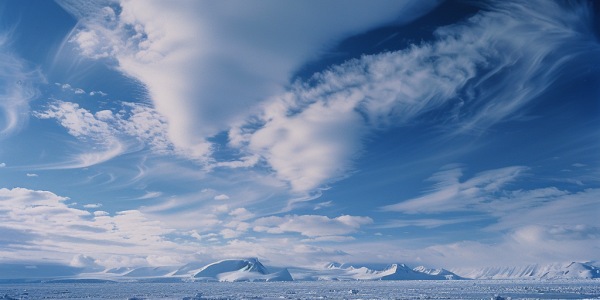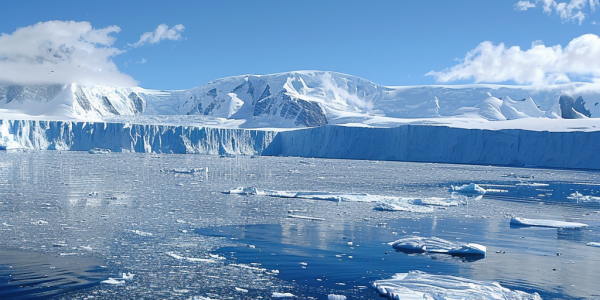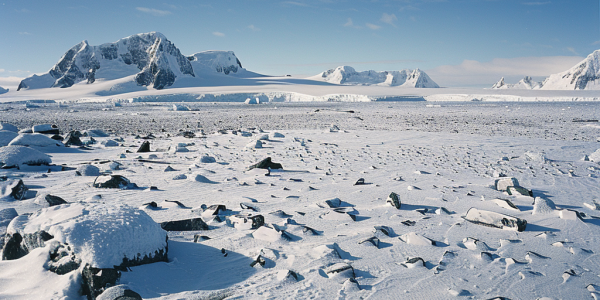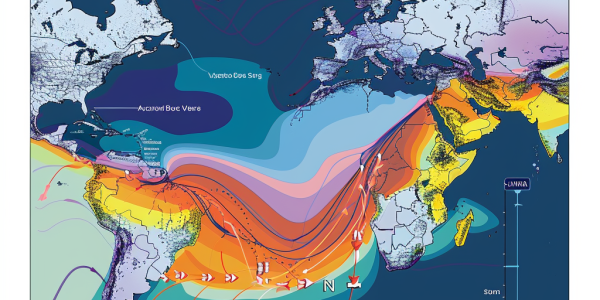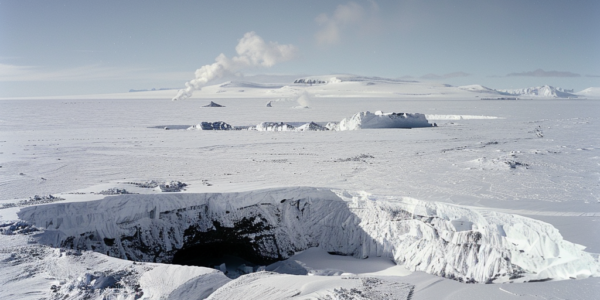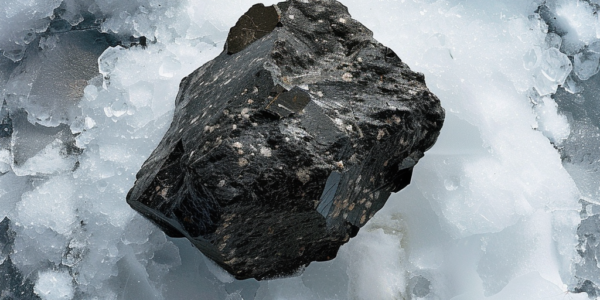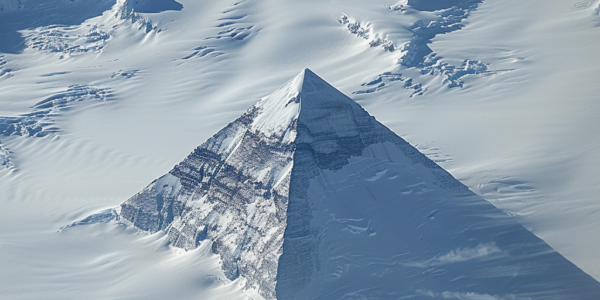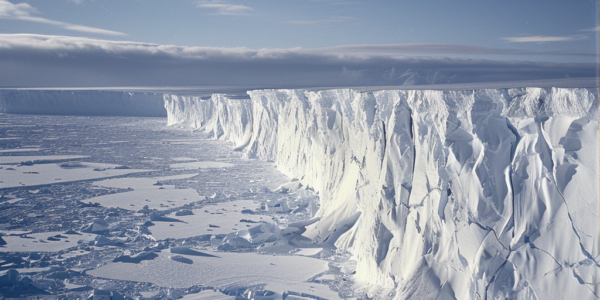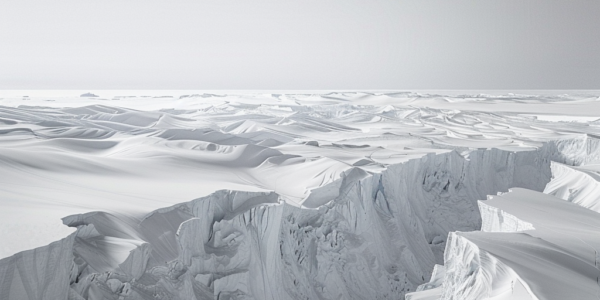Ozone Layer Faces Renewed Crisis Despite Progress
The ozone layer, crucial for protecting life on Earth from harmful UV rays, is once again facing a crisis due to human-made chemicals. Despite progress in reducing ozone-depleting substances, a persistent hole over Antarctica poses a threat to plant and animal life. The international community must remain vigilant in curbing harmful emissions to safeguard our planet.
Study Reveals Ocean Water Flowing Miles Underneath Antarctica’s ‘Doomsday Glacier’
A new study reveals that ocean water is rushing miles underneath Antarctica’s ‘Doomsday Glacier,’ potentially impacting sea level rise. The Thwaites Glacier in West Antarctica, known for its catastrophic effects on sea levels, is facing increased risks of melting. The study highlights the concerning dynamics at play and the urgent need for continued monitoring and research.
Antarctic Volcano Spews Gold Dust Daily, NASA Reveals
Discover the incredible natural phenomenon in Antarctica where Mount Erebus is spitting out gold dust worth $6,000 daily. Named after the personification of darkness in Greek mythology, this active volcano emits gas pockets containing crystallized gold particles, with researchers finding gold in volcanic gases and surrounding snow. Despite the tragic event in 1979 when Air New Zealand Flight 901 crashed into its side, Mount Erebus continues to erupt, with NASA Earth Observatory reporting the gold emission reaching up to 621 miles away.
Antarctica’s Melting Ice Threatens Valuable Meteorite Discoveries
Antarctica, known for its abundance of meteorites, is facing a concerning trend as climate change causes the ice to melt, making these valuable space rocks increasingly difficult to find. A recent study highlights the impact of warming temperatures on the Antarctic ice sheet, leading to the disappearance of over 5,000 meteorites each year. This loss not only hinders scientific research but also underscores the far-reaching impact of climate change on even the most remote regions of the planet.
Study Reveals Weakening of Atlantic Abyssal Limb in North Atlantic
A recent study published in Nature Geoscience reveals a weakening of the Atlantic Meridional Overturning Circulation abyssal limb in the North Atlantic, impacting heat and carbon redistribution. The study shows a decrease in the transport of Antarctic Bottom Water towards the north, with warming trends contributing to sea-level rise in the region. This weakening is linked to reduced formation rates of Antarctic Bottom Water and abyssal warming in the western Atlantic Ocean.
Antarctica’s Volcanoes: What We Know
Antarctica is home to the largest volcanic region on Earth, with as many as 138 volcanoes. While most are not classified as active, Mount Erebus and Deception Island are known to be active. Mount Erebus has been continuously erupting since at least 1972, emitting plumes of gas and steam, and occasionally spewing out rock ‘bombs.’ Its persistent lava lake provides scientists with a rare opportunity to study the inner workings of a volcano in real-time.
Antarctic Meteorites Threatened by Climate Warming, Study Finds
A new study published in Nature Climate Change reveals that climate warming is causing many extraterrestrial rocks to be lost from the surface of Antarctica by melting into the ice sheet. The research predicts that approximately 24% of meteorites will be lost by 2050, potentially rising to approximately 76% by 2100 under a high-emissions scenario. The findings raise concerns about the future of Antarctic meteorites and the potential loss of valuable extraterrestrial rocks due to climate warming.
Mysterious ‘Pyramid’ Discovered in Antarctica Sparks Conspiracy Theories
A mysterious pyramid-shaped mass discovered beneath the ice in Antarctica has sparked intense speculation and wild conspiracy theories. The resemblance to the Great Pyramid of Giza and its location in an uninhabitable area has led to a frenzy on the internet. While some believe it belonged to a pre-flood civilization, others have jokingly referenced the Illuminati. However, a geology professor has provided an alternative explanation, stating that the ‘pyramid’ is actually a natural feature known as a ‘pyramidal peaked mountain’, formed from the convergence of glaciers on the sides of an existing landmass.
Research Reveals Record-breaking Speed of Glacier Fracture in Antarctica
Recent research from the University of Washington reveals an 80-mph speed record for glacier fracture in Antarctica. The study underscores the critical need to understand the behavior of ice shelves in the face of warmer oceans and the potential implications for rising sea levels. The research has significant implications for understanding the potential impact of glacier fracture on rising sea levels and calls for further investigation into the behavior of ice shelves in large-scale ice sheet models.
Alarming Discovery About ‘Doomsday Glacier’ in Antarctica
Scientists have made a startling discovery about the Thwaites Glacier in West Antarctica, often referred to as the ‘Doomsday Glacier.’ A new study reveals evidence that the glacier began rapidly retreating in the 1940s, raising concerns about the alarming rate of future melting. The implications of the Thwaites Glacier’s fate are substantial, with potential sea level rise and catastrophic global flooding. This research emphasizes the urgent need for global efforts to address climate change and its impacts.

